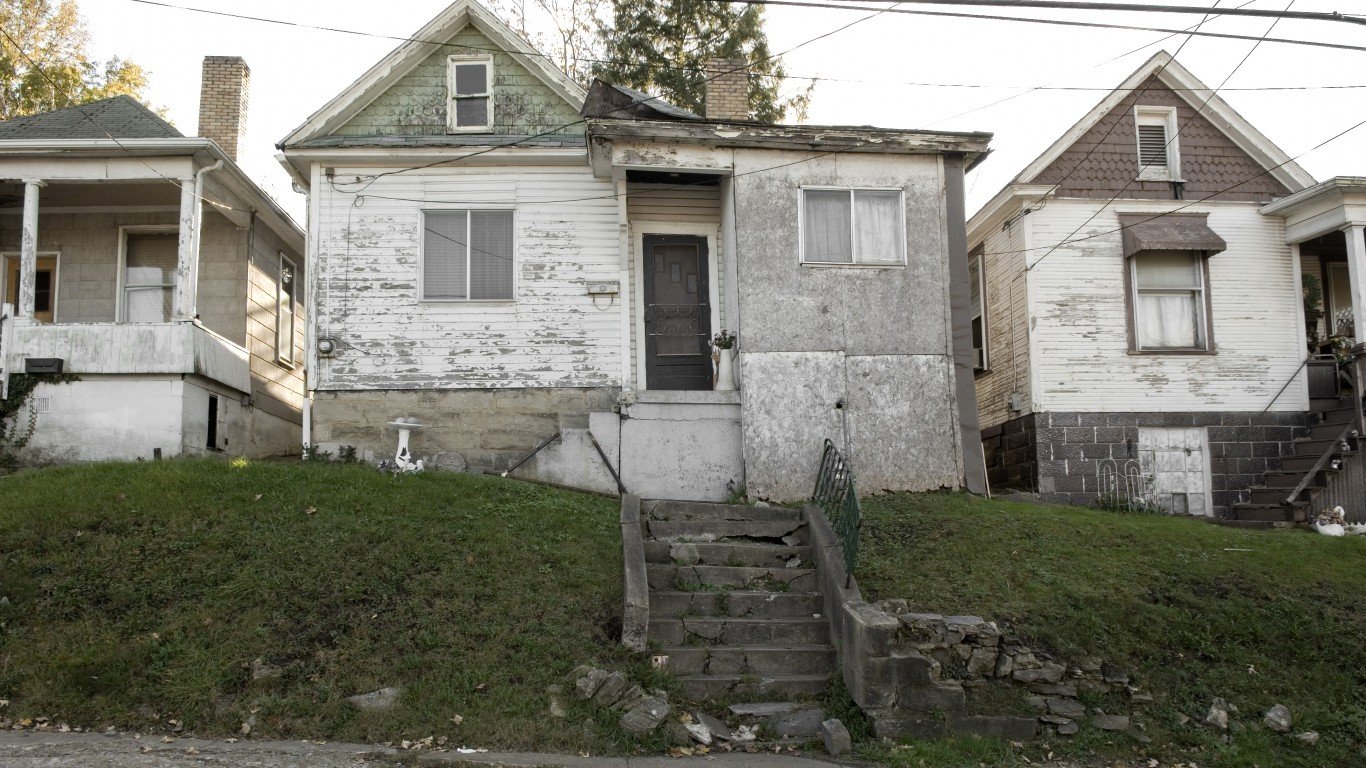

Severe inflation continues to plague the United States economy, and those higher prices have been particularly hard to bear on those with lower pay. While incomes have been generally rising, they have not matched the inflation rate, eroding real wages.
According to census data released in September, the typical U.S. household income was $69,717 in 2021, about $4,000 higher compared to 2019, the last time the Census released an annual American Community Survey, having skipped a year due to data collection problems tied to the pandemic.
While the median income increased nationwide, in many states, wages did not rise to the same degree. In states like Louisiana and Oklahoma, two of the poorest states in the country, incomes rose by about one-quarter of the national increase. In these states and others, incomes remain well below the national median.
To identify the poorest states in America, 24/7 Wall St. reviewed one-year median household income estimates from the U.S. Census Bureau’s 2021 American Community Survey. The states listed are those with median household incomes of at least $5,000 below the national median of $69,717. Additional information on the percentage of households receiving SNAP (food stamps) benefits, educational attainment, median home value, and population are also one-year estimates from the 2021 ACS.
The vast majority of the poorest states in the country are in the South and the Midwest. In most, home values reflect the relatively low incomes in the state and are among the lowest in the country. (Here are cities with the cheapest housing.)
Educational attainment is a strong predictor of income, as workers with more education are more likely to have high-paying, secure jobs. Nationwide, the typical college graduate earns $61,073 a year, compared to the $35,019 for those with only a high school diploma and more than double the $28,085 median for those who never graduated high school.
As might be expected, the states with the lowest median incomes tend to have far fewer college-educated adults than the national share of 35.0%. The five poorest states all rank among the 10 states with the fewest college-educated adults. (Here are America’s least educated states.)
Click here to see 18 states where Americans make the least money.
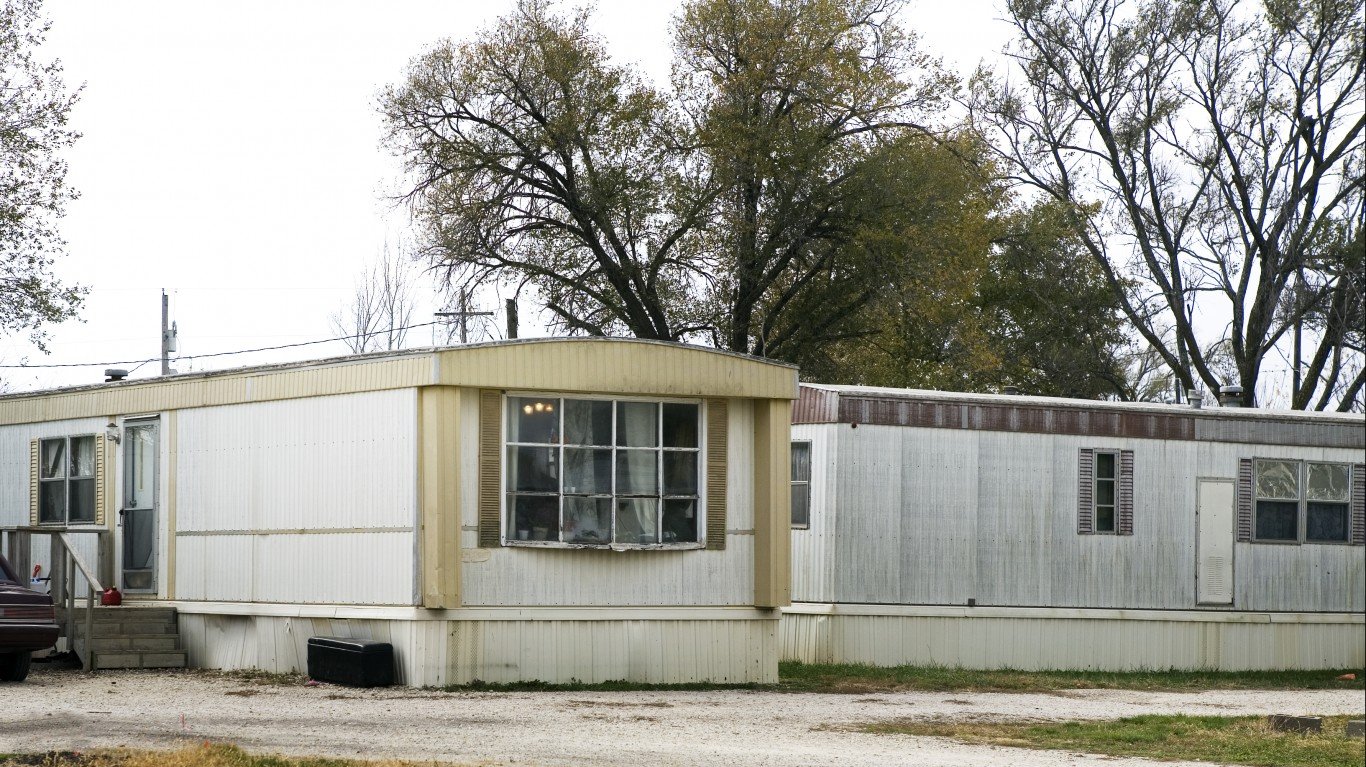
18. Kansas
> Median household income: $64,124
> Median home value: $183,800 (10th lowest)
> Adults with a bachelor’s degree or higher: 35.4% (19th highest)
> Households receiving SNAP benefits: 7.3% (5th lowest)
> Population: 2,934,582 (16th lowest)
[in-text-ad]

17. Michigan
> Median household income: $63,498
> Median home value: $199,100 (13th lowest)
> Adults with a bachelor’s degree or higher: 31.7% (18th lowest)
> Households receiving SNAP benefits: 13.4% (17th highest)
> Population: 10,050,811 (10th highest)

16. Montana
> Median household income: $63,249
> Median home value: $322,800 (17th highest)
> Adults with a bachelor’s degree or higher: 34.8% (22nd highest)
> Households receiving SNAP benefits: 8.6% (11th lowest)
> Population: 1,104,271 (8th lowest)

15. Florida
> Median household income: $63,062
> Median home value: $290,700 (21st highest)
> Adults with a bachelor’s degree or higher: 33.2% (25th lowest)
> Households receiving SNAP benefits: 14.1% (10th highest)
> Population: 21,781,128 (3rd highest)
[in-text-ad-2]

14. Indiana
> Median household income: $62,743
> Median home value: $182,400 (9th lowest)
> Adults with a bachelor’s degree or higher: 28.9% (9th lowest)
> Households receiving SNAP benefits: 9.4% (14th lowest)
> Population: 6,805,985 (17th highest)
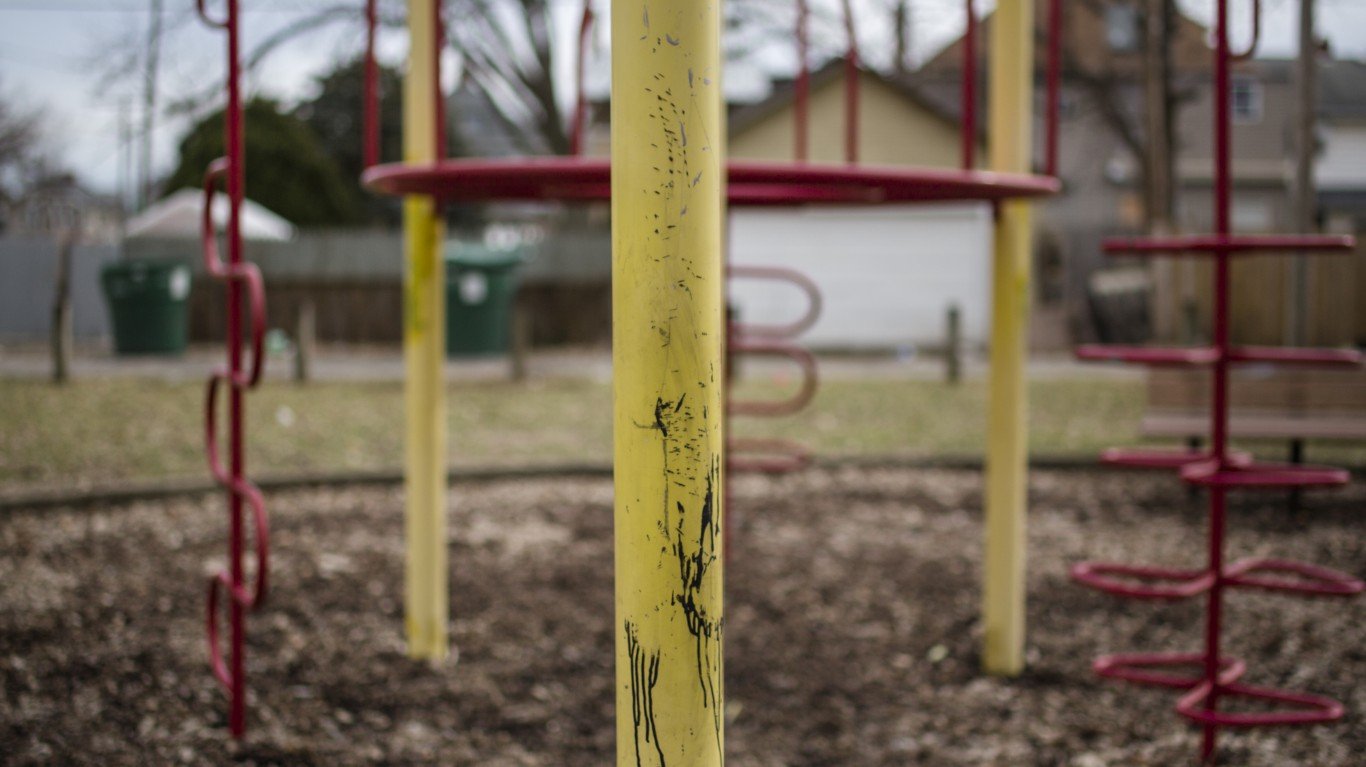
13. Ohio
> Median household income: $62,262
> Median home value: $180,200 (8th lowest)
> Adults with a bachelor’s degree or higher: 30.7% (15th lowest)
> Households receiving SNAP benefits: 13.0% (18th highest)
> Population: 11,780,017 (7th highest)
[in-text-ad]

12. North Carolina
> Median household income: $61,972
> Median home value: $236,900 (23rd lowest)
> Adults with a bachelor’s degree or higher: 34.9% (21st highest)
> Households receiving SNAP benefits: 13.9% (13th highest)
> Population: 10,551,162 (9th highest)

11. Missouri
> Median household income: $61,847
> Median home value: $198,300 (12th lowest)
> Adults with a bachelor’s degree or higher: 31.7% (19th lowest)
> Households receiving SNAP benefits: 10.2% (16th lowest)
> Population: 6,168,187 (18th highest)

10. Tennessee
> Median household income: $59,695
> Median home value: $235,200 (22nd lowest)
> Adults with a bachelor’s degree or higher: 30.5% (12th lowest)
> Households receiving SNAP benefits: 11.9% (25th highest)
> Population: 6,975,218 (16th highest)
[in-text-ad-2]
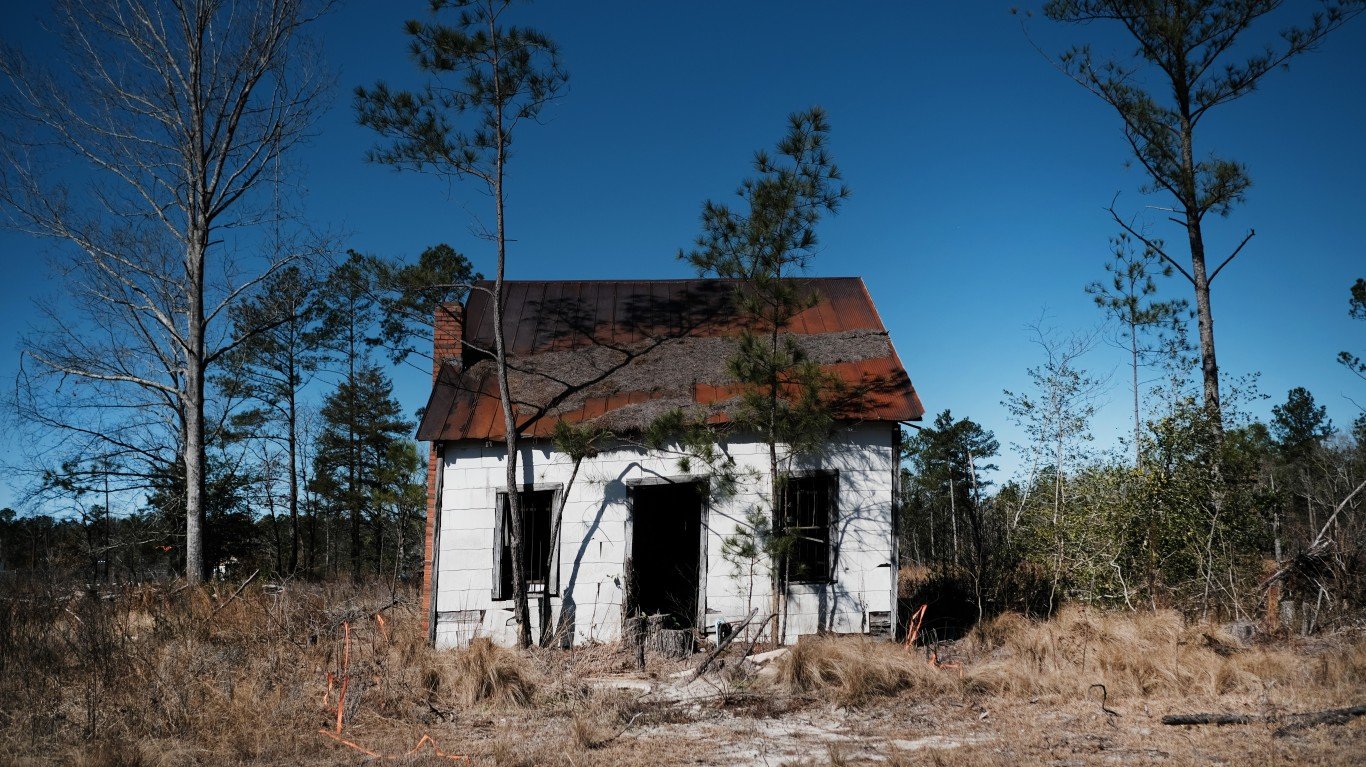
9. South Carolina
> Median household income: $59,318
> Median home value: $213,500 (15th lowest)
> Adults with a bachelor’s degree or higher: 31.5% (16th lowest)
> Households receiving SNAP benefits: 11.1% (21st lowest)
> Population: 5,190,705 (23rd highest)
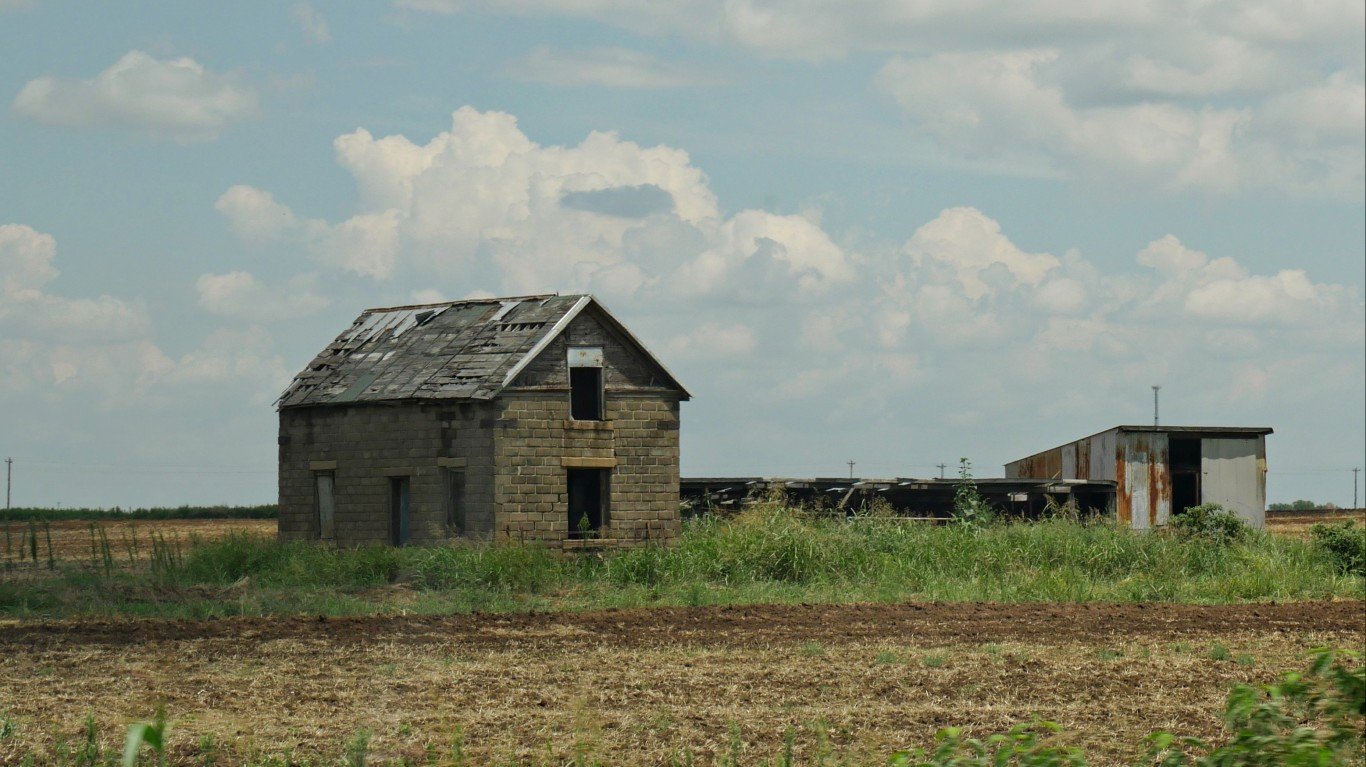
8. Oklahoma
> Median household income: $55,826
> Median home value: $168,500 (4th lowest)
> Adults with a bachelor’s degree or higher: 27.9% (8th lowest)
> Households receiving SNAP benefits: 13.8% (14th highest)
> Population: 3,986,639 (23rd lowest)
[in-text-ad]

7. Kentucky
> Median household income: $55,573
> Median home value: $173,300 (6th lowest)
> Adults with a bachelor’s degree or higher: 27.0% (5th lowest)
> Households receiving SNAP benefits: 14.2% (8th highest)
> Population: 4,509,394 (25th lowest)
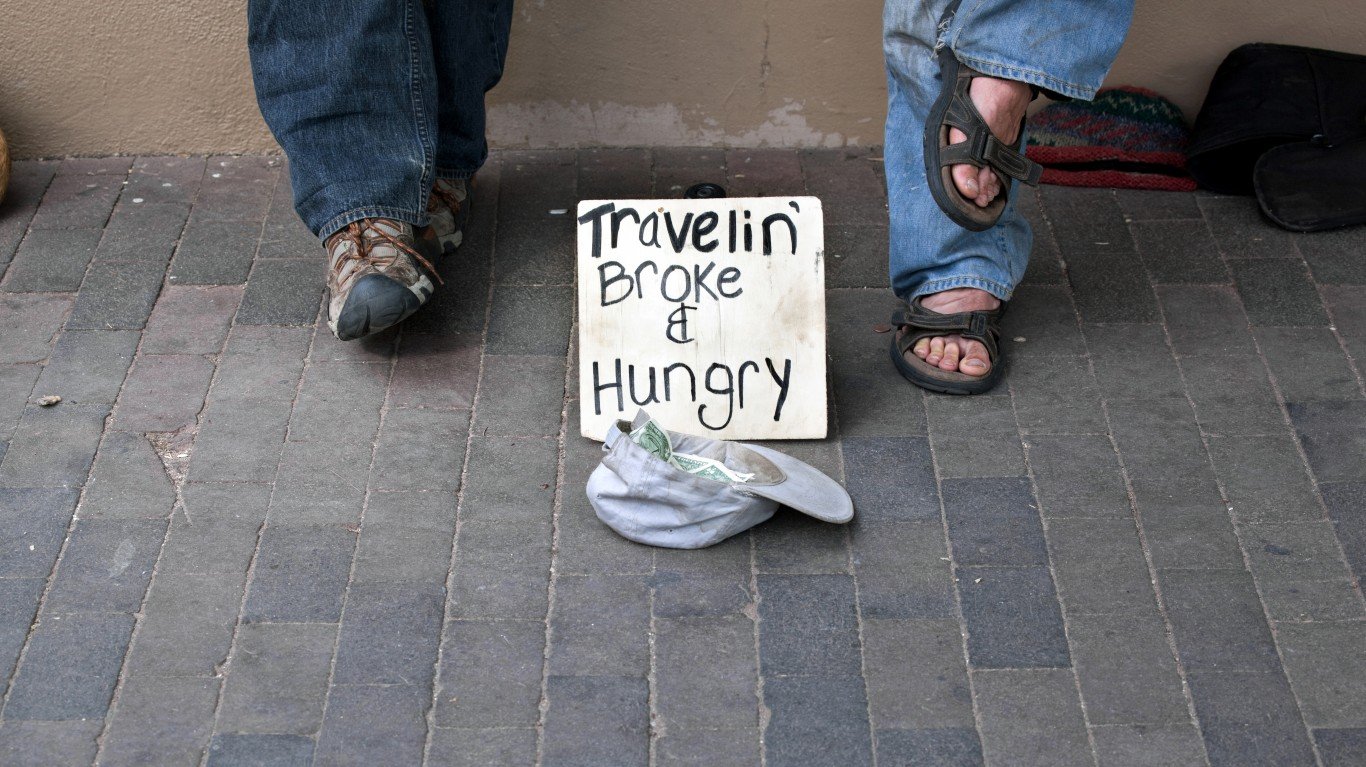
6. New Mexico
> Median household income: $53,992
> Median home value: $214,000 (16th lowest)
> Adults with a bachelor’s degree or higher: 30.1% (11th lowest)
> Households receiving SNAP benefits: 20.7% (the highest)
> Population: 2,115,877 (15th lowest)

5. Alabama
> Median household income: $53,913
> Median home value: $172,800 (5th lowest)
> Adults with a bachelor’s degree or higher: 27.4% (6th lowest)
> Households receiving SNAP benefits: 14.1% (11th highest)
> Population: 5,039,877 (24th highest)
[in-text-ad-2]

4. Arkansas
> Median household income: $52,528
> Median home value: $162,300 (3rd lowest)
> Adults with a bachelor’s degree or higher: 25.3% (3rd lowest)
> Households receiving SNAP benefits: 10.9% (19th lowest)
> Population: 3,025,891 (18th lowest)
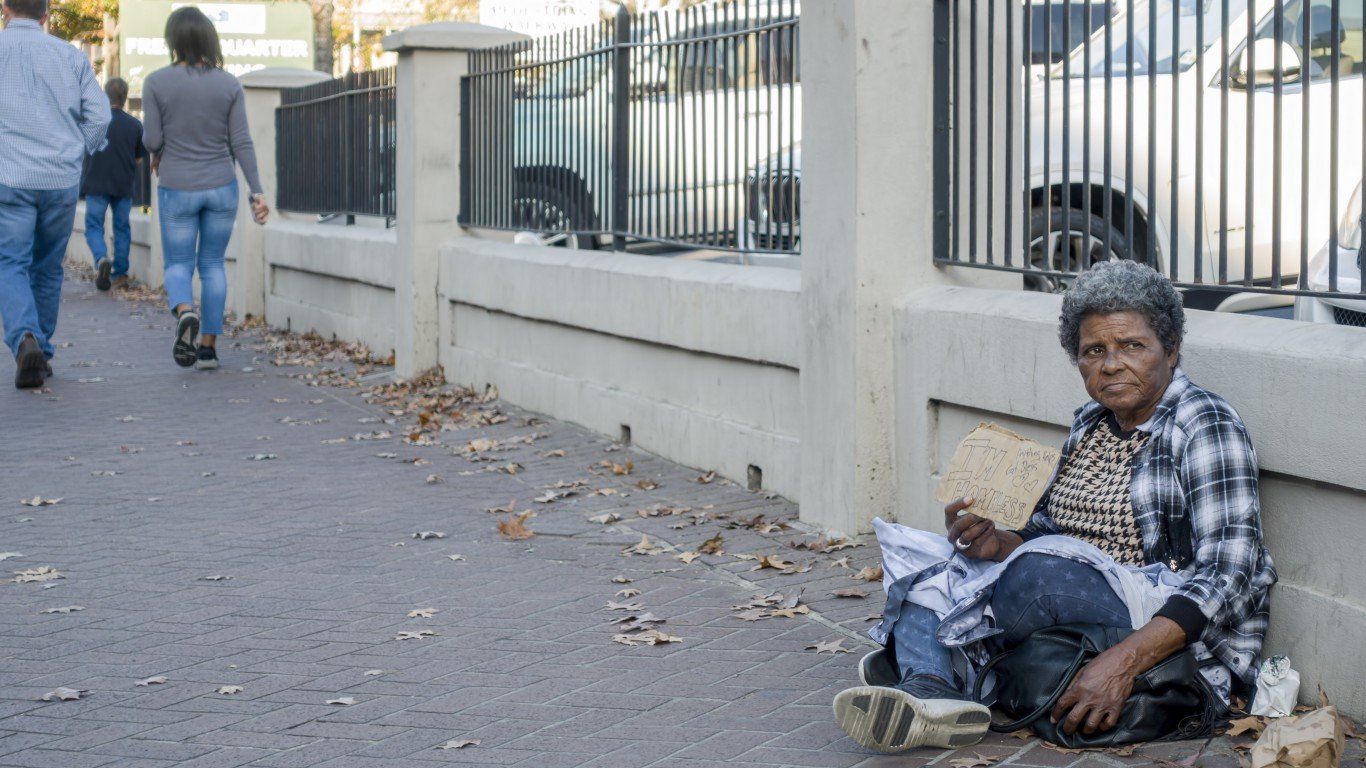
3. Louisiana
> Median household income: $52,087
> Median home value: $192,800 (11th lowest)
> Adults with a bachelor’s degree or higher: 26.4% (4th lowest)
> Households receiving SNAP benefits: 19.0% (2nd highest)
> Population: 4,624,047 (25th highest)
[in-text-ad]

2. West Virginia
> Median household income: $51,248
> Median home value: $143,200 (the lowest)
> Adults with a bachelor’s degree or higher: 24.1% (the lowest)
> Households receiving SNAP benefits: 18.3% (3rd highest)
> Population: 1,782,959 (12th lowest)
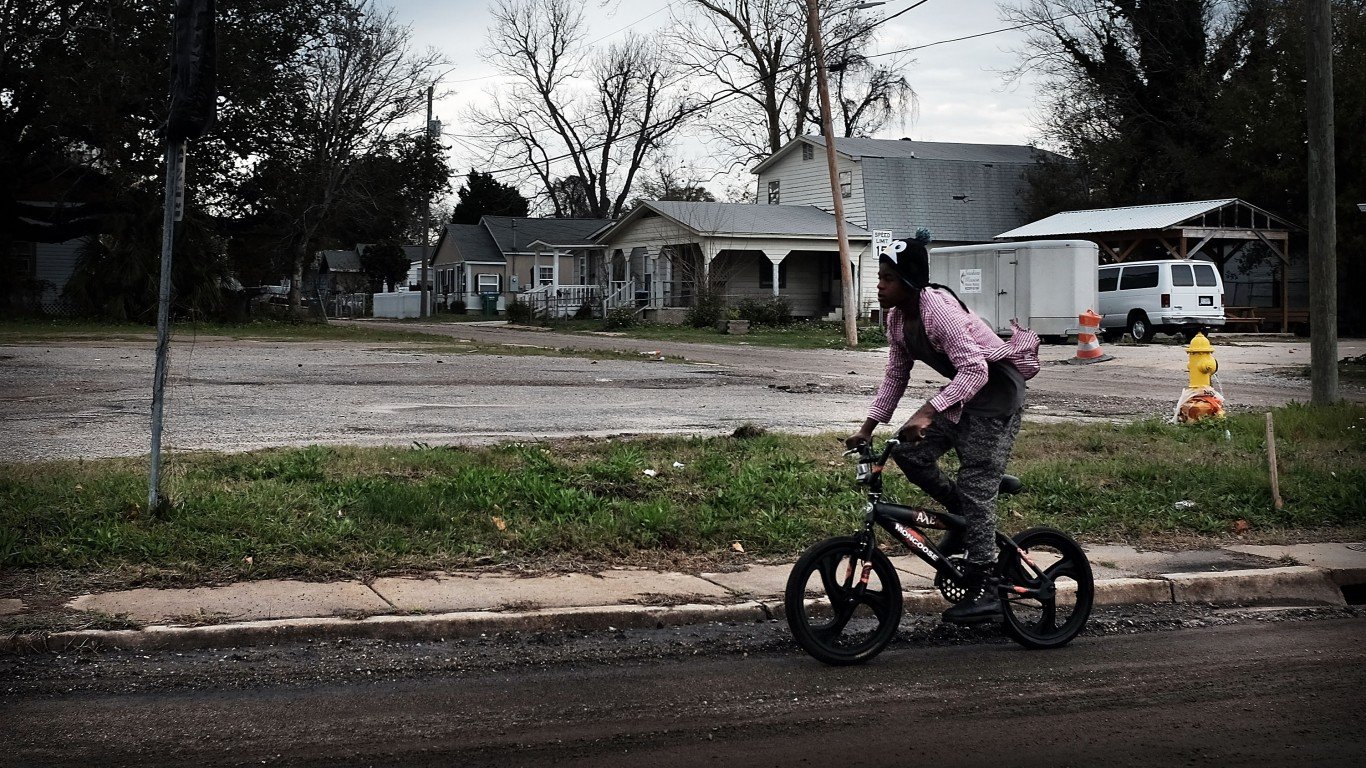
1. Mississippi
> Median household income: $48,716
> Median home value: $145,600 (2nd lowest)
> Adults with a bachelor’s degree or higher: 24.8% (2nd lowest)
> Households receiving SNAP benefits: 13.5% (16th highest)
> Population: 2,949,965 (17th lowest)
Essential Tips for Investing: Sponsored
A financial advisor can help you understand the advantages and disadvantages of investment properties. Finding a qualified financial advisor doesn’t have to be hard. SmartAsset’s free tool matches you with up to three financial advisors who serve your area, and you can interview your advisor matches at no cost to decide which one is right for you. If you’re ready to find an advisor who can help you achieve your financial goals, get started now.
Investing in real estate can diversify your portfolio. But expanding your horizons may add additional costs. If you’re an investor looking to minimize expenses, consider checking out online brokerages. They often offer low investment fees, helping you maximize your profit.
Thank you for reading! Have some feedback for us?
Contact the 24/7 Wall St. editorial team.
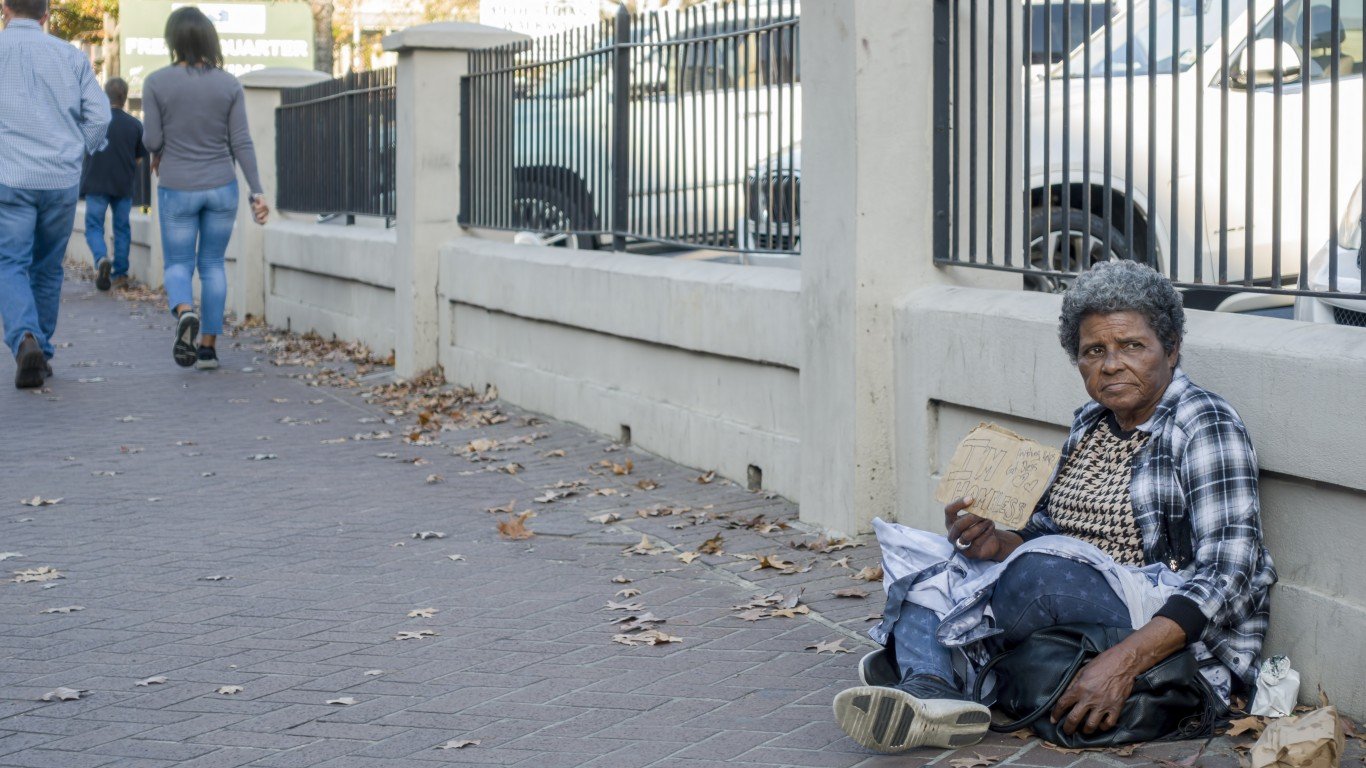 24/7 Wall St.
24/7 Wall St. 24/7 Wall St.
24/7 Wall St.


